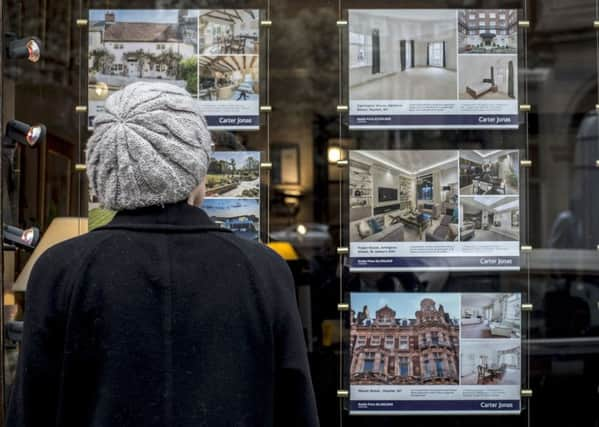Best cities to undercut house asking prices revealed


According to a new figures, nationally, homes are typically selling for £10,623 less than their original asking prices, equating to an average gap between asking and selling prices of 3.86 percent.
The analysis by property website Zoopla reveals that vendors are currently securing 0.32 percent less on the final sale value compared to the previous period.
Advertisement
Hide AdAdvertisement
Hide AdPrices across the 25 largest urban areas in England and Wales were analysed for the study, and a North-South divide was found whereby properties in the South of England are currently selling closest to their original asking price.
The biggest gap in the country was found in Bradford - 6.32 percent - but the big urban centres of Yorkshire taken as a whole have proved to be an anomaly in the findings.
Zoopla found that year-on-year properties in Yorkshire have performed the best in terms of closing the gap between the asking and sale prices. The difference between the two figures decreased by 0.54 per cent - from 4.88 per cent to 4.34 per cent, equating to £6,915 below asking price.
The smallest gap between asking and sale prices currently being achieved in Yorkshire is in Sheffield - just a 2.07 percent gap.
Advertisement
Hide AdAdvertisement
Hide AdThe steel city is the second best performing big urban area in England and Wales for vendors, ranked only behind Bristol where the difference is 1.9 percent.
Nationally, the percentage gap between the amounts sellers want and what they eventually receive has widened over the last year. A year ago, sales were typically being agreed at 3.54 percent less than asking prices.
Lawrence Hall, a spokesman for Zoopla, said: “It is perhaps unsurprising that properties in the south of the country are currently selling closest to their original asking price, as demand for properties in the capital and its surrounding commuter belt remains high.
“Though it is interesting to note that these same areas are the ones that have seen sale values slip furthest from the asking price over the past year, which is perhaps reflective of a slight slowdown in market activity in and around the capital.”
Advertisement
Hide AdAdvertisement
Hide AdHomes in Wales are currently selling the furthest from the asking price, but the region did make headway in reducing the difference year-on-year.
Wales was joint second alongside the West Midlands, with homes selling 0.46 percent closer to the asking price compared to the previous period.
Meanwhile, the capital tells a different story.
Last year, the average home in London sold for just 1.96 percent under the asking price, whereas vendors selling their property this year are only managing to secure an average sale value of 4.09 percent under the asking price - a drop of 2.13 percent year-on-year.
Elsewhere and homes in the notoriously expensive South East are selling closest to the asking price - typically at 3.06 percent below - suggesting sellers are holding firm.
Advertisement
Hide AdAdvertisement
Hide AdZoopla’s figures are based figures generated from its own website and others supplied by the Land Registry.
SO WHERE ARE BUYERS GET THE BEST AND WORST DEALS?
The top 10 cities with the smallest difference between the asking price and the selling price typically over the past year, according to Zoopla are as follows:
Bristol, 1.9%
Sheffield, 2.07%
Coventry, 2.09%
Reading, 2.42%
Birmingham, 2.63%
Manchester, 2.76%
Southampton, 2.95%
Northampton, 3.06%
York, 3.14%
Norwich, 3.14%
And the top 10 cities with the biggest difference between the asking price and the selling price are:
Bradford, 6.32%
Preston, 6.24%
Swansea, 5.87%
Newcastle-upon-Tyne, 5.19%
Bolton, 4.92%
Doncaster, 4.78%
Hull, 4.08%
Derby, 4.06%
Leicester, 3.89%
Plymouth, 3.82%
In West Yorkshire, Leeds was in the top 25 urban areas for the smallest price gap. An average property currently sells for 3.65 percent less than the asking price, an improvement year-on-year from 3.99 percent in 2016.